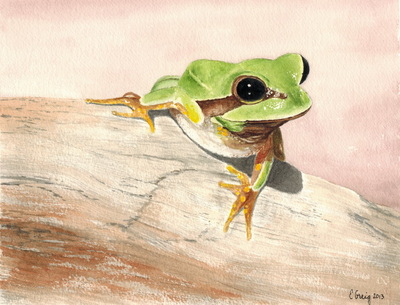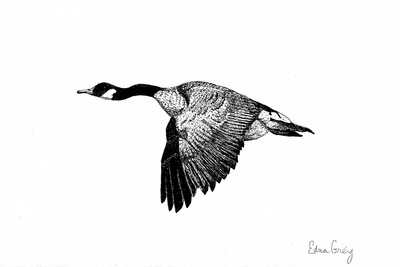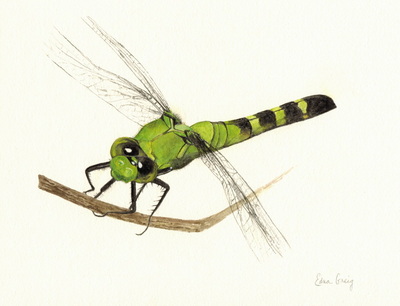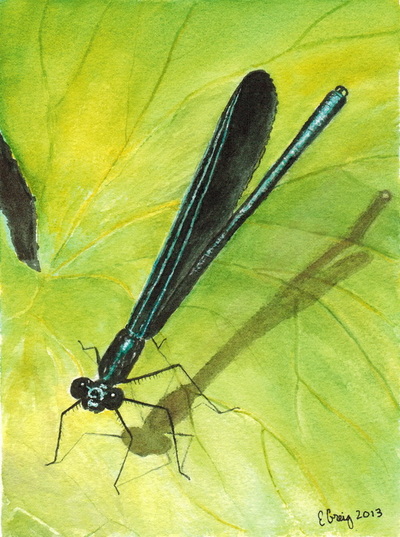| Portraits of Nature |
|
Fauna Gallery
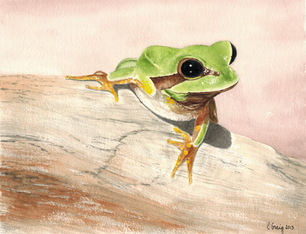
Pine Barrens Treefrog (Hyla andersonii)
Watercolor on paper
8.5" x 10.5" (22 x 27 cm)
From a photo by Aubrey M. Heupel of Fingerprince Prints Photography.
This little frog (about 1.75 inches or 44 mm long) lives in acidic habitats in three distinct areas of the eastern US, with the largest population being in the New Jersey Pine Barrens. It’s classified as a threatened species by the state of New Jersey due to loss of habitat and pollution of breeding ponds, but its population is considered stable.
Watercolor on paper
8.5" x 10.5" (22 x 27 cm)
From a photo by Aubrey M. Heupel of Fingerprince Prints Photography.
This little frog (about 1.75 inches or 44 mm long) lives in acidic habitats in three distinct areas of the eastern US, with the largest population being in the New Jersey Pine Barrens. It’s classified as a threatened species by the state of New Jersey due to loss of habitat and pollution of breeding ponds, but its population is considered stable.
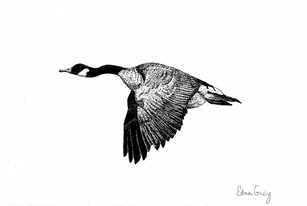
Canada Goose (Branta canadensis)
Pen and ink on paper
6.5" x 10" (17 x 25 cm)
Although they are considered pests in many areas, I enjoy watching Canada Geese flying in V-shaped formations.
Pen and ink on paper
6.5" x 10" (17 x 25 cm)
Although they are considered pests in many areas, I enjoy watching Canada Geese flying in V-shaped formations.
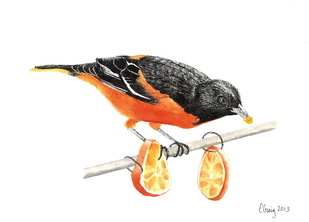
Baltimore Oriole (Icterus galbula)
Pen and watercolor wash on paper
8" x 11" (20 x 28 cm)
From a photo by melron49 in the WetCanvas Image Gallery.
Baltimore Orioles are common in open deciduous woodlands throughout much of North America. You can attract them to your yard with slices of orange.
Pen and watercolor wash on paper
8" x 11" (20 x 28 cm)
From a photo by melron49 in the WetCanvas Image Gallery.
Baltimore Orioles are common in open deciduous woodlands throughout much of North America. You can attract them to your yard with slices of orange.
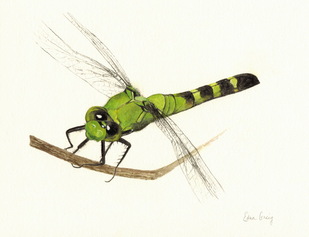
Eastern Pondhawk (Erythemis simplicicollis) female
Casein on paper
8.5" x 10.5" (22 x 27 cm)
Eastern Pondhawk is a common dragonfly of eastern North America. Males are blue, and females are green and black. The name pondhawk comes from the fact that this species is a ferocious hunter often found near ponds.
About the medium - Casein (pronounced kay'seen) is a water-based paint made from milk protein. It has been around for thousands of years but has waned in popularity since the introduction of acrylic paints in the 1950s.
Casein on paper
8.5" x 10.5" (22 x 27 cm)
Eastern Pondhawk is a common dragonfly of eastern North America. Males are blue, and females are green and black. The name pondhawk comes from the fact that this species is a ferocious hunter often found near ponds.
About the medium - Casein (pronounced kay'seen) is a water-based paint made from milk protein. It has been around for thousands of years but has waned in popularity since the introduction of acrylic paints in the 1950s.
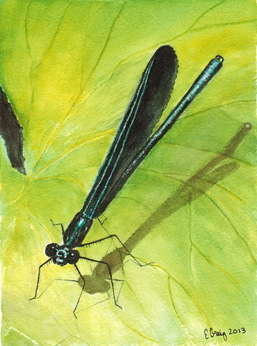
Ebony Jewelwing (Calopteryx maculata)
Watercolor on paper
6.5" x 8.5" (17 x 22 cm)
Ebony Jewelwings are common damselflies of eastern North America that have dark wings and iridescent blue or green bodies. They’re easy to spot as they flutter amid the vegetation near tranquil streams and ponds. Check my Eye on Nature blog post to learn more about Ebony Jewelwings.
Watercolor on paper
6.5" x 8.5" (17 x 22 cm)
Ebony Jewelwings are common damselflies of eastern North America that have dark wings and iridescent blue or green bodies. They’re easy to spot as they flutter amid the vegetation near tranquil streams and ponds. Check my Eye on Nature blog post to learn more about Ebony Jewelwings.
Copyright 2013-2014 Edna Greig. All rights reserved.
